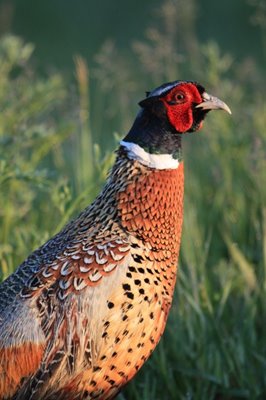
Actions to improve grassland pheasant habitat and pheasant populations are off to a positive start, but much of the work remains ahead, according to a
report card developed by the Minnesota Department of Natural Resources that tracks progress on the state’s Pheasant Summit Action Plan.
“The report card highlights positive action and trends on a number of specific items that improve pheasant populations and pheasant hunting,” said DNR Commissioner Tom Landwehr. “However, as the 2016 legislative session gets started, we are at a critical fork in the road for the pheasant plan that may decide whether we make meaningful progress or head on a downward trend.”
Legislators currently have several pheasant plan action items on their agenda for consideration, including Outdoor Heritage Fund recommendations, which support pheasant habitat protection and enhancement through a variety of state and nonprofit organization programs; Gov. Mark Dayton’s bonding proposal, which increases funding for public land acquisition as well as provides funding for private land conservation through the Conservation Reserve Enhancement Program (CREP); and legislation that boosts the amount of roadside habitat available.
The report card is an important component of the Pheasant Summit Action Plan because it allows the DNR, partners, and the public to monitor progress on the ten strategies and associated action steps in the plan. It also highlights areas that need additional resources.
“Pheasant populations are an indicator of the health of the landscape,” said Kevin Lines, DNR pheasant action plan coordinator. “Pheasant habitat is important not only for hunters, but also for all Minnesotans who care about clean water, healthy soils and our state’s natural heritage.”
While improving pheasant habitat and providing quality hunting opportunity require public land acquisitions from willing sellers, more than 95 percent of the pheasant range is in private ownership. For that reason, private lands conservation programs, such as CREP, are an important component of success.
“The proposed CREP would permanently protect and restore grassland and wetlands on the most environmentally sensitive and beneficial acres,” said John Jaschke, executive director of the Minnesota Board of Water and Soil Resources (BWSR). “It’s a multi-benefit approach that will yield significant progress both for Minnesota’s water quality and wildlife needs.”
The
CREP proposal is a five-agency effort led by BWSR that includes the Minnesota Department of Agriculture, Minnesota Department of Health, Minnesota Pollution Control Agency and the DNR.
About Pheasants Forever
Pheasants Forever, including its quail conservation division, Quail Forever, is the nation's largest nonprofit organization dedicated to upland habitat conservation. Pheasants Forever and Quail Forever have more than 145,000 members and 700 local chapters across the United States and Canada. Chapters are empowered to determine how 100 percent of their locally raised conservation funds are spent; the only national conservation organization that operates through this truly grassroots structure. Since creation in 1982, Pheasants Forever has spent $634 million on 502,000 habitat projects benefiting 14.1 million acres nationwide.
Media Contact
Jared Wiklund
(651) 209-4953
jwiklund@pheasantsforever.org